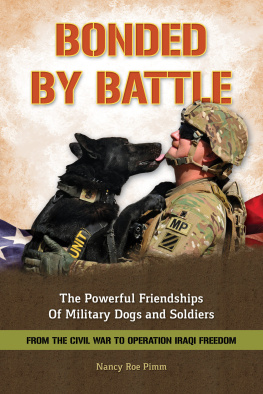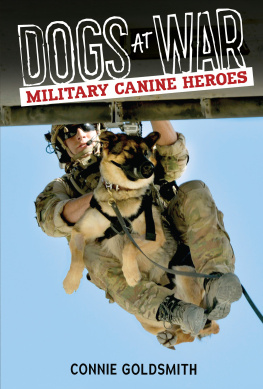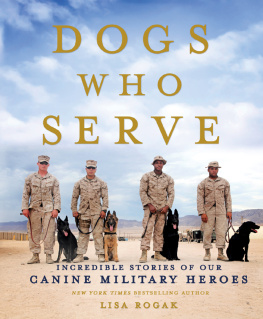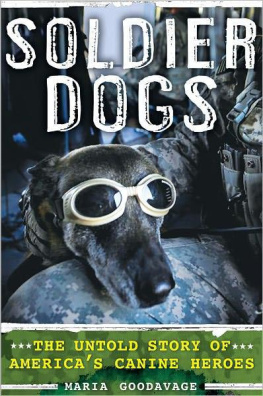He is your friend, your defender, your dog. You are his life, his love, his leader. He will be yours faithful and true, To the last beat of his heart. You owe it to him to be worthy of such devotion.
Anonymous
There is something about a dog. Forever loyal, they offer unconditional love. They greet their favorite human with glowing eyes, wagging tails, and wiggling bodies. And the bond between man and dog is as long as it is strong. How long? Archeologists discovered fossilized remains of cave dwellers and dogs buried side by side. Scientists believe that dogs protected our prehistoric ancestors in times of danger, assisted them in the hunt for food, and even followed them into combat.
In Egypt, wall writings approximately 6,000 years old portray warriors gripping the leashes of vicious dogs leaping on the enemy. Temple walls in Iraq depict huge mastiff battle dogs wearing spiked iron collars. All manner of armies Persian, Assyrian, Babylonian sent dogs out to the front lines to take down their enemies horses and force infantrymen to lower their shields, exposing them to attack.
During the Peloponnesian War (431-404 BCE), a detachment of Greek warriors approached the citadel of Corinth as their enemy lay sleeping inside its walls. Having returned from a great victory, the Corinthians had celebrated late into the night. They would be easy prey for an ambush, or so the Greeks thought. But as these intruders stormed the citadel, fifty wide-awake warriors were waiting for them the Corinthian canine corps stood guard at the perimeter of the city. As the Greeks approached, the dogs attacked. Forty-nine of the fifty dogs died at the hands of the enemy soldiers, but one dog escaped and fled to town to wake the sleeping soldiers. After a bloody but victorious defense, the city ordered a silver collar for their canine savior with the inscription, Soter, defender and preserver of Corinth. A marble monument was erected to honor the forty-nine fallen soldier dogs.
During the battle of Vercellae in 101 BCE, the Teuton women led packs of dogs wearing protective armor against the Romans. Although it was a lost cause, the dogs kept the victors at bay for hours. The Romans took notice and soon had trained their own canine formations trained to run underneath enemy horses. The dogs, clad in body armor that bristled with razor-sharp spikes, caused the horses to throw their mounts. When the enemy soldiers hit the ground, the huge mastiff-type dogs pounced. Five centuries later, giant Molossian dogs serving Attila the Huns army could play both offense and defense. Encased in protective plates, the canine warriors stood guard against sneak attacks and also joined their human companions in battle.
Little is said in these ancient accounts of the relationship between dogs and soldiers. But anyone who has experienced the fierce devotion of a dog surely knows what that bond must have been like. During the Seven Years War (17561763), the Prussian king Frederick the Great reportedly said, The more I see of men, the better I like my dog.1
Like the great generals before him, Napoleon Bonaparte understood the tactical importance of dogs in war. He posted sentries to the walls surrounding Alexandria, Egypt, when his French army occupied that city. Their barks served as an early warning system. But Napoleon also witnessed the emotional side of dogs, the comfort and compassion they bring to the fields of suffering and death.
While inspecting the carnage after the Battle of Castiglione in 1796, he encountered a dog whining and licking the hand of his human companion who lay before him lifeless. As Napoleon approached, the dog not knowing or caring that this man was the emperor of France barked insistently, pleading with him to come to the aid of his soldier. Later, Napoleon would write the following:
Perhaps it was the spirit of the time and place that affected me. But I assure you no occurrence of any of my other battlefields impressed me so keenly. I halted on my tour to gaze on the spectacle, and reflect on its meaning. This soldier, I realized, must have had friends at home and in his regiment; yet lay there deserted by all except his dog.... I had looked on, unmoved, at battles which decide the future of nations. Tearless, I had given orders which brought death to thousands. Yet here I was stirred, profoundly stirred, stirred to tears. And by what? By the grief of one dog.2
Today, canines are used in combat operations as never before serving the American armed forces. These four-footed soldiers officially called military working dogs not only protect as guard dogs at military bases, but they also alert soldiers to hidden explosives in buildings and vehicles and beneath roads. Some leap out of airplanes and free-fall 10,000 feet with their handlers, or are strapped to their handlers backs as they fast-rope out of helicopters and drop into remote battle zones. Fitted with bulletproof vests, they become live remote control action figures responding to commands they hear in their earbuds, and sending back night-vision video from head-mounted cameras.
The working dog is a weapon system that is resilient, compact, easily deployable, and can move fast when needed, says Air Force Master Sergeant Antonio Rodriguez, who has overseen more than one hundred military working dog teams. Nothing compares.3 Former commander of United States forces in Afghanistan General David Petraeus agrees. The capability they bring to the fight cannot be replicated by man or machine, he said. 4
Along with the latest high-tech gear strapped to their bodies, their natural sensory powers serve as built-in weapons. Start with those hard-working noses. The number of smell receptors in a dogs nose ranges from 125 million to 300 million, compared to as few as five or six million in a human nose.
While humans see with their eyes, dogs see with their noses. A dog inhales through its nostrils and exhales out of the slits located on each side of its nose. This swirling motion of inhaled and exhaled air gives the dog a steady stream of air and new odors. When airflow enters the nose it splits into two different paths, one for olfaction and one for respiration, said Brent Craven, a bioengineer at Pennsylvania State University. 5
Dogs also have a better sense of smell because the part of their brain that is devoted to analyzing scents is forty times larger than a humans. While the olfactory area of our brain is about the size of a postage stamp, if you could unfold the olfactory area of a dogs brain, it would be as large as 60 square inches, about the size of a piece of paper. This makes for a nose that scientists have estimated to be 10,000 to 100,000 times more sensitive than human noses. 6










